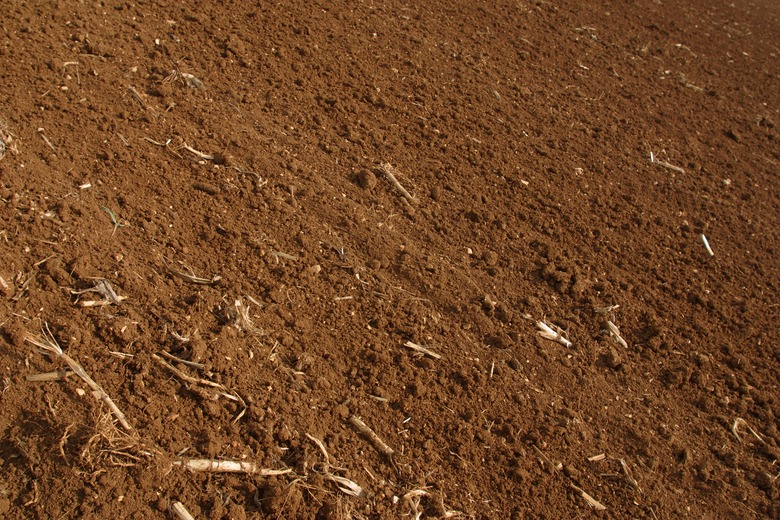Difference Between A Bottom Plow & A Turning Plow
A plow is a useful and traditional piece of farm and garden equipment that serves a number of purposes for soil preparation. Plowing breaks open and pulverizes the soil, improving its water retention and allowing roots to extend deeply. Plows also help incorporate manure or other organic additives into the soil. Both bottom plows and turning plows consist of a plowshare that cuts into the ground, and a mold board that turns the soil. Unlike a bottom plow, a turning plow is made for use on slopes and hills because it allows the user to control the direction that dirt is thrown.
Bottom Plow
Bottom Plow
A regular bottom plow is a useful gardening instrument and will break up soil at a significant depth. It turns the soil and buries any existing weeds or grasses. It is often called a moldboard plow. The main difference between this traditional plow design and the turning plow is that when dropping soil, the bottom plow tends to switch between downhill and uphill with each pass. Bottom plows are ideal for use on flat ground and adequately break up clay or heavily compacted soil. They do not create a ridge between rows as middle buster plows do.
Using a Bottom Plow
Using a Bottom Plow
Bottom plows are made with one or more plowshares, ranging in size from 10 inches to 16 inches each. For instance, two-bottom plows have two plowshares. Designs with three, four and more plowshares also exist for use on large plots. Bottom plows bring up soil that exists at a lower level, enriching the topsoil with nutrients below the surface and leaving the soil loose and aerated.
Turning Plow
Turning Plow
A turning plow often refers to a plow designed for hillsides. On such turning plows, the plowshare is constructed with a hinge that the farmer can use to reverse the direction that soil is thrown. This allows the farmer to make sure the soil is tossed downhill regardless of the plow's direction of travel. A turning plow may refer to a plow that is designed to flip the soil over and loosen the dirt. This type of plow is not always appropriate for breaking up soil, unless your soil is loose and sandy. Clay or hard soil is not easily pulverized with this type of turning plow.
Using a Turning Plow
Using a Turning Plow
Hillside plows, often called turning plows, appear in a variety of styles. Many have adjustments for both vertical and horizontal draft. Hillside plows consist of a plowshare and a show on the body of the machine, which allow suction of soil because of the shape of the plow. The easiest hillside plows have a more significant concave shape.
References
- Industrial Magazine; Methods of Earth Excavation
- U.S. Department of Transportation: Stock-Drawn Equipment for Trail Work
- Food and Everyday Life on Kentucky Family Farms, 1920-1950; John Van Willigen, et al.
